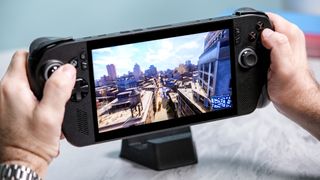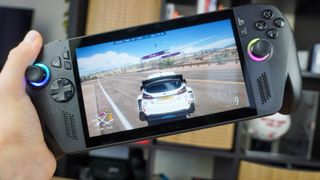Gaming
Explore Gaming
Latest about Gaming

NYT Pips today hints and answers — Sunday, December 14
By Scott Younker last updated
Get clues and answers for today's NYT Pips to keep your streak going.

NYT Connections today hints and answers — Sunday, December 14 (#917)
By Scott Younker last updated
Get today's NYT Connections clues and answers for today's puzzle #917 on December 14.

Nintendo Switch 2 vs Steam Deck OLED — I took both on a trip to determine the best gaming handheld
By Rory Mellon published
I packed both Nintendo Switch 2 and Steam Deck OLED in my luggage on a recent trip to decide which handheld is the top pick.

Today's NYT Strands hints and answer — solutions to game #650, December 13
By Alan Martin last updated
We help you find today's Strands answers with some useful hints and tips to win.

Today’s Wordle hints and answer: December 13, 2025, solution #1,638
By Alan Martin last updated
Find out what today's Wordle hint and answer is and get some tips for it, plus see the solutions to previous games.

Level up for less! I've vetted the best PS5 and Xbox holiday deals
By Dylan Haas published
Black Friday may be over, but there are still plenty of deals to shop before the holidays officially begin, including great discounts on popular gaming consoles.

I review gaming headsets for a living and the Alienware Pro Wireless Gaming Headset is the most comfortable set of cans I’ve used
By Nikita Achanta published
The Alienware Pro Wireless Gaming Headset is extremely comfortable, the audio quality is highly detailed and it boasts highly effective ANC.

Game Awards 2025 live — all the reveals, announcements, trailers and all the winners
By Rory Mellon last updated
The Game Awards 2025 is set to be the biggest night in gaming, with the best of the year honored and brand new games revealed.
Here at Tom’s Guide our expert editors are committed to bringing you the best news, reviews and guides to help you stay informed and ahead of the curve!


